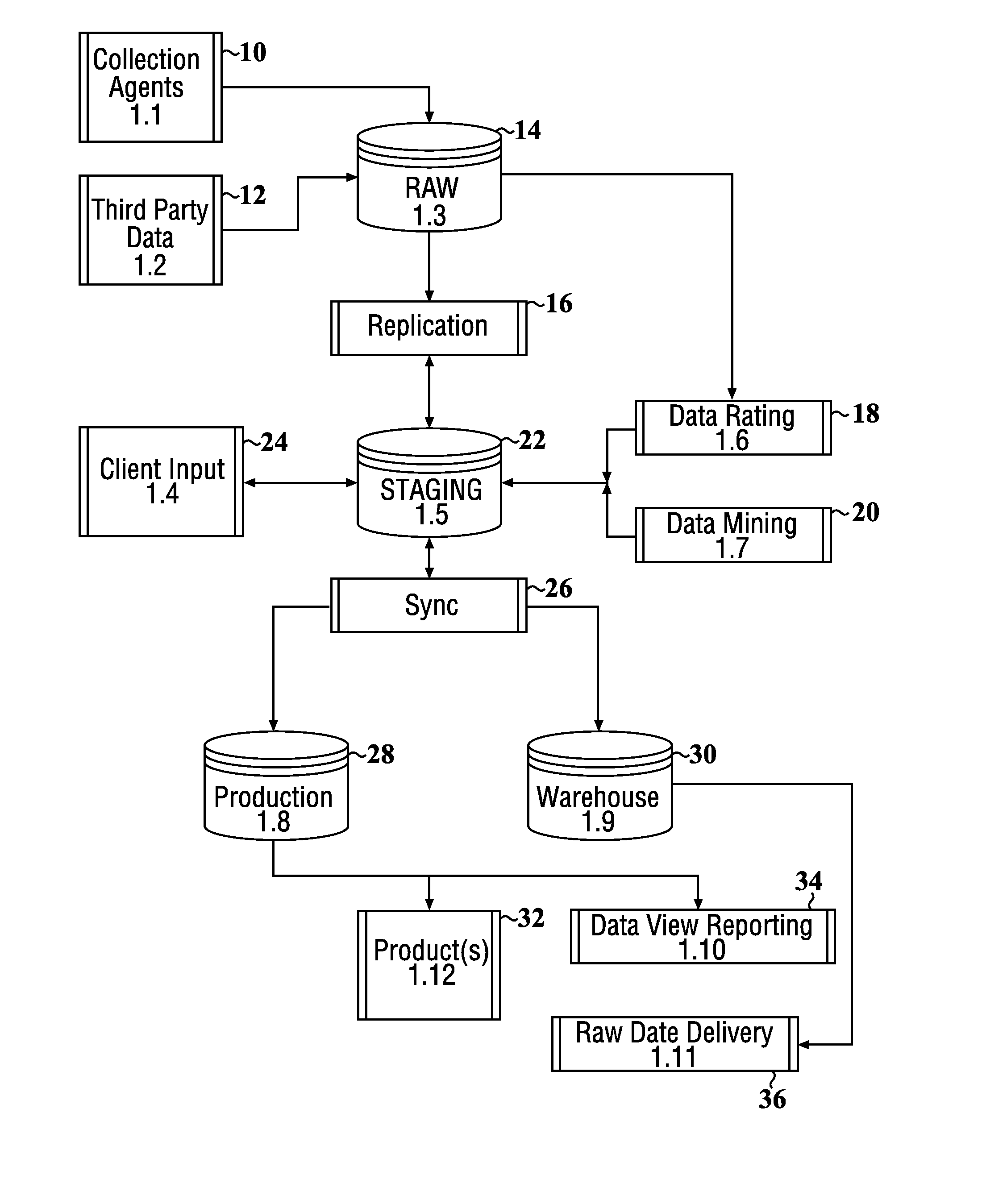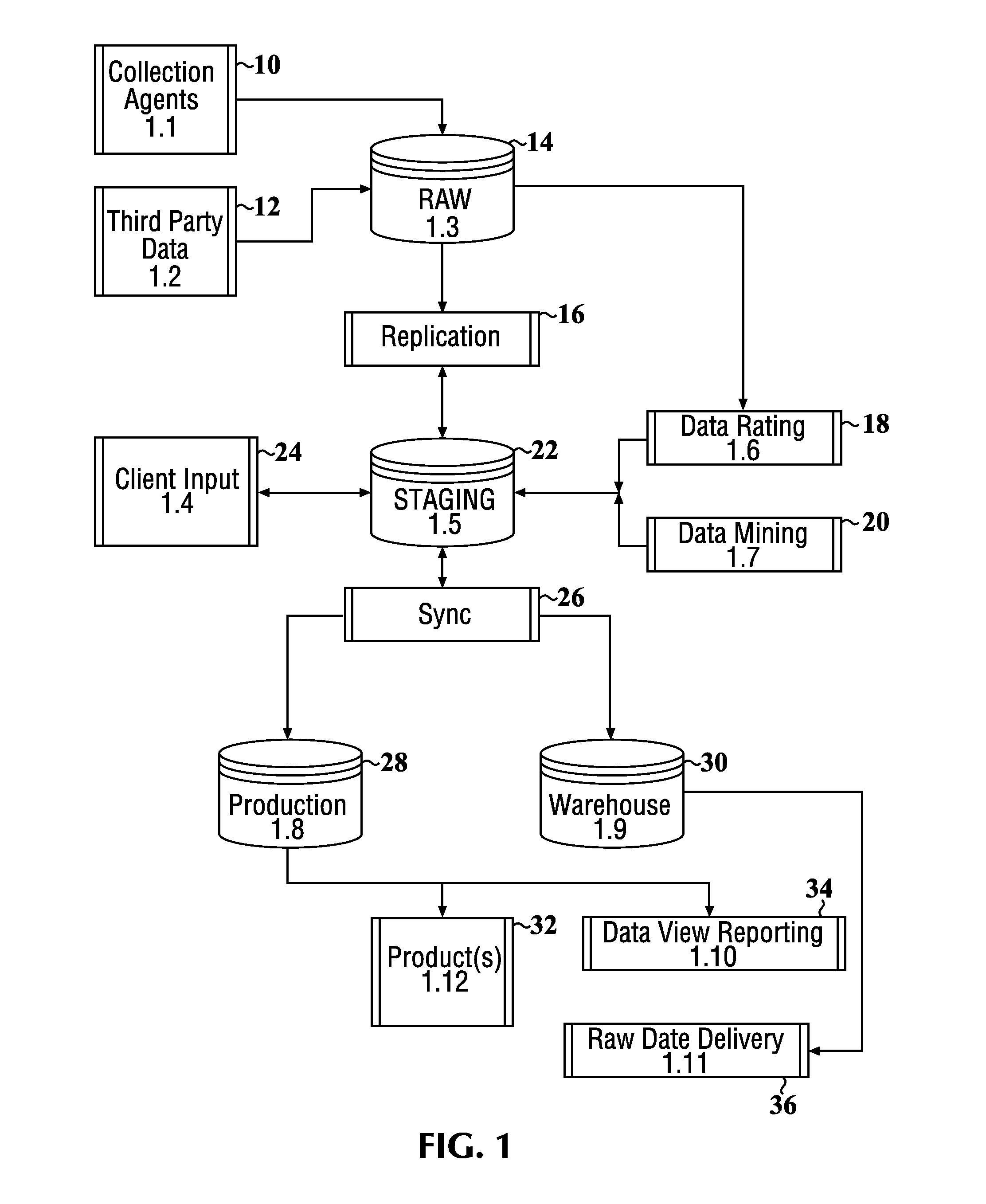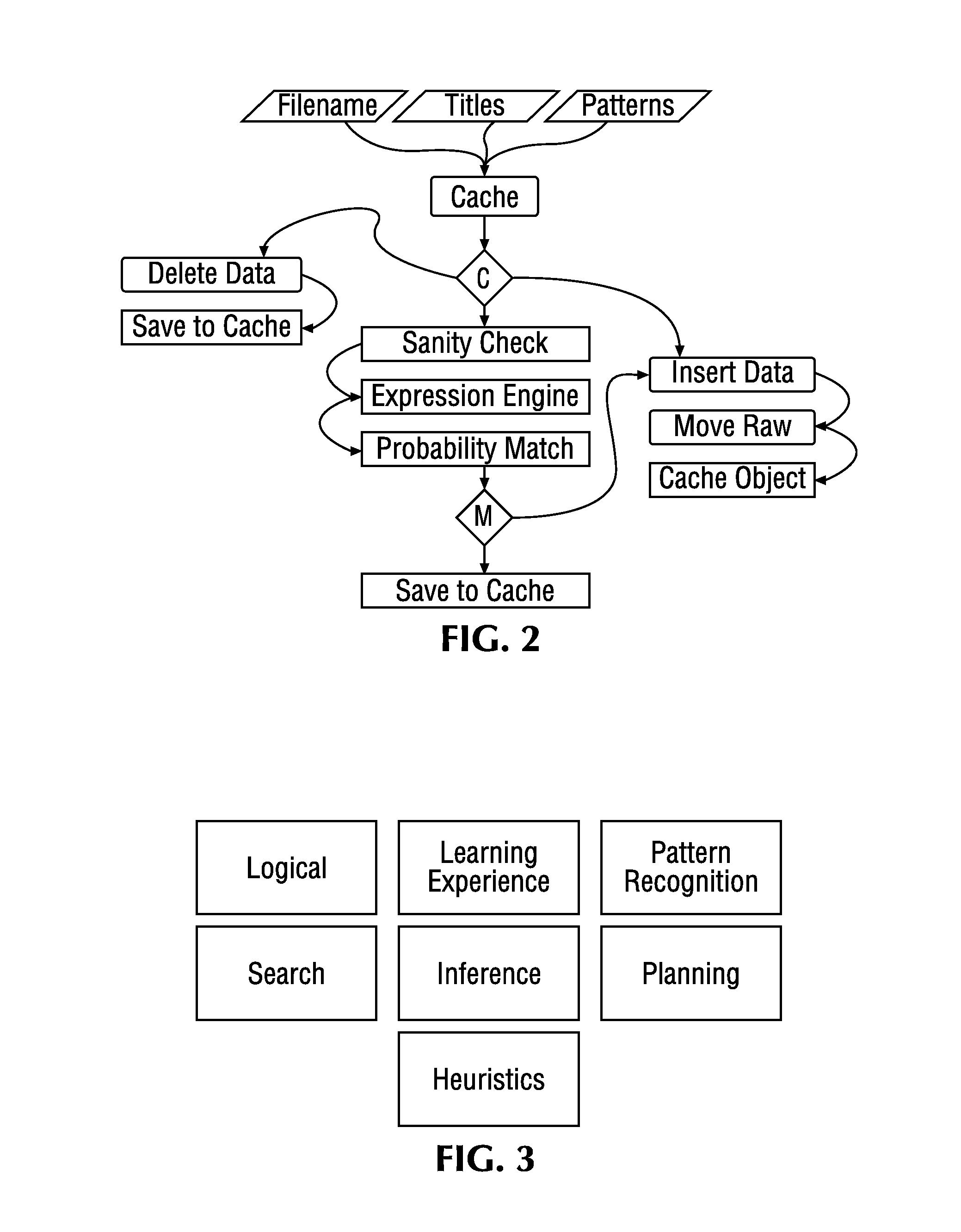However, the key to
the Internet's success is the
Internet Protocol—a routing and addressing protocol layered on top of the physical protocols and ignorant of the actual physical medium used.
As such, little attention was paid to
data security threats originating within the network, and the protocols do not capture much information that can be used to identify nefarious individuals or malicious data.
When the Internet was commercialized during the tech bubble of the 1990s, the open nature of Internet's basic protocols was abused to flood the Internet with unwanted traffic.
Because the authenticity of the sender is nearly impossible to validate, spam solutions generally examine the content of the e-mail to determine whether to categorize it as spam.
While spam is annoying, compared to modern threats to
data security, spam now appears in hindsight like the quaint troubles of a bygone era of naiveté.
In the modern day, sophisticated security threats also come in the form of “bots”—intelligent
software planted on otherwise innocuous networked computers and commandeered by the malefactor without the knowledge of the infected computer's operator.
The infected computer then becomes a “
zombie” under the wrongdoer's control, and the wrongdoer directs the
zombie to carry out attacks or fraudulent transactions, thus removing the true source of the
attack from the apparent source of the
attack by another degree of separation and further frustrating attempts to identify and stop the malefactor.
The
botnet floods the victim network with traffic that appears innocent but quickly brings the
system to its knees, causing legitimate users to receive a “
timeout” message stating that the
web site is too busy to serve them.
While a DDoS attack is frustrating to the business, major DDoS attacks are easy to spot once they begin and the victim corporation simply issues a
press release informing the public of why the website is not available.
Consequently, even a highly sophisticated DDoS attack is rarely successful for more than a few days, and often no more than a few hours, resulting in some interruption of normal business operations with only modest financial damage.
The amount of damage a sophisticated
botnet can inflict increases with the price performance of commodity hardware.
Unfortunately, the breadth and depth of these threats is such that countermeasures tend to be complex, cumbersome, expensive, and intrusive upon legitimate use, pushing unto innocent users too much of the burden of dealing with bad actors.
Further, modern countermeasures are, at best, only partially successful.
However, because the actual data transmitted over TCP is broken into separate datagrams which may arrive out of sequence, the
payload often cannot be examined and analyzed until it has been received, at which point it already presents a
threat.
By then, it may be too late.
However, IP Addresses are no longer static Innovations such as the Dynamic Host Configuration Protocol (“DHCP”) allow routers to autonomously assign IP Addresses to computers within that
router's subnet, effectively creating self-configuring sub-networks that require little maintenance or attention.
As
mobile device use becomes more prolific, the one-to-one relationship between an
IP Address and a particular device is being eroded.
Thus, it's not enough to
blacklist a given
IP Address; countermeasures must also be able to remove IP Addresses from the
blacklist as they are recycled and assigned to new users presenting no
threat or risk.
Blacklists are also insufficient because an IP Address that presents a risk for one type of transaction may present no risk at all for another type of transaction.
Tracking the
ebb and flow of IP Addresses is made even more difficult because of the size of the addressing space.
The use of home routers to create private networks also hides additional computers behind a single address, meaning that a single IP Address assigned to a cable subscriber may actually represent transactions from multiple computers accessing the Internet through a shared gateway, some of which may be malicious, and others of which may not.
Consequently, current
threat mitigation systems do not focus on identifying malicious IP Addresses, but instead narrowly define potential threat factors based on the
payload sent.
That is, existing systems do not determine whether a particular IP Address presents a threat, but instead whether the particular
payload or transaction for that IP Address is malicious.
Examining a payload can sometimes provide a proxy for detecting a criminal, and if the payload cannot be delivered, the criminal activity cannot be carried out.
However, the sophistication and signature of attacks changes rapidly, and firms providing
malware protection services struggle to keep up with the speed and flexibility of these programs.
Further exacerbating the situation, it can be difficult to anticipate the new ways in which payloads can be hidden or disguised, and existing solutions to
malware are thus generally reactive, rather than proactive.
 Login to View More
Login to View More  Login to View More
Login to View More 


